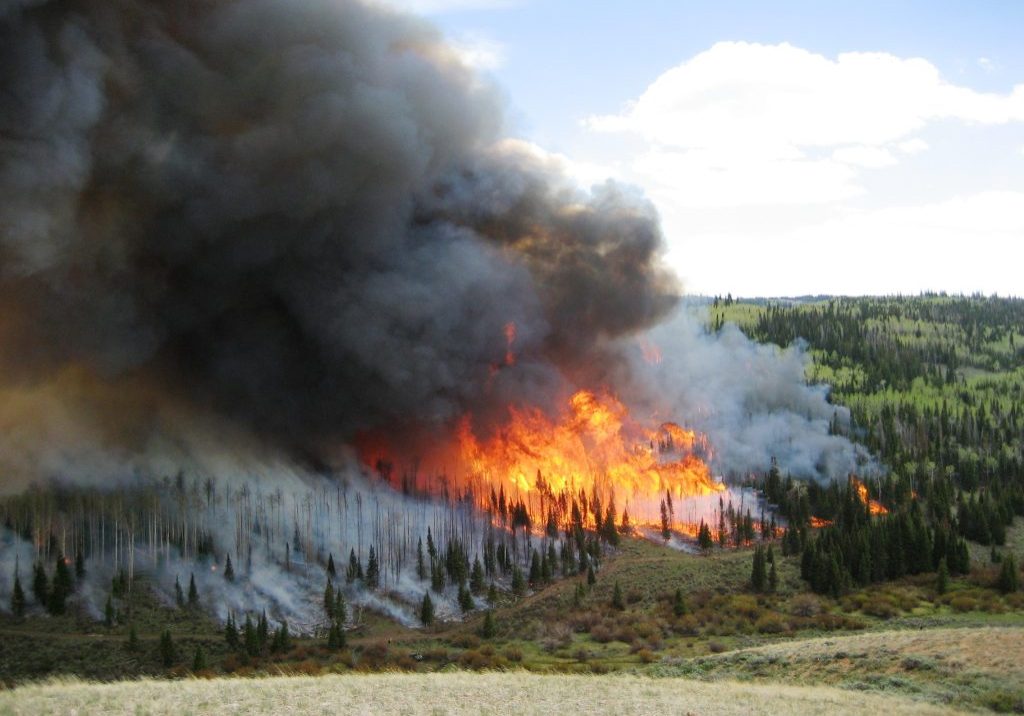
Community Networks in Fire-Environment Resilience (CoNIFER)
About the Project
Communities are on the frontlines of wildfire exposure and function as laboratories of innovative approaches for reducing risk. The CoNIFER project investigates the extent to which community wildfire protection planning affects how wildfire risk management stakeholders adapt the approaches they take to mitigate wildfire threats from local to regional scales.
How these different groups come together to plan for and carry out actions contributes to how successful these efforts are at reducing risks on the ground. Some groups may work together well to share expertise and resources while others may be characterized by competition and find it challenging to develop a shared way forward. While these differences have real and meaningful implications for the success of efforts to reduce wildfire risk, there is limited understanding of how stakeholder interactions affect learning or success in working together.
Leadership Team
Jonathan Salerno - Colorado State University
Matthew Hamilton - Ohio State University
Antony Cheng - Colorado State University
Eric Toman - Colorado State University
A. Paige Fischer - University of Michigan
Max Nielsen-Pincus - Portland State University
Post-Doctoral Fellows
Federico Holm - Colorado State University 2022-2023
Jennifer Brousseau - Colorado State University 2023-2024
Advisory Group
Daniel Beveridge - Colorado State Forest Service
Patty Champ - US Forest Service
Gloria Edwards - Southern Rockies Fire Science Network
Daniel Godwin - US Forest Service
Rebecca Samulski - Fire Adapted Colorado
John Sanderson - Colorado State University, Center for Collaborative Conservation
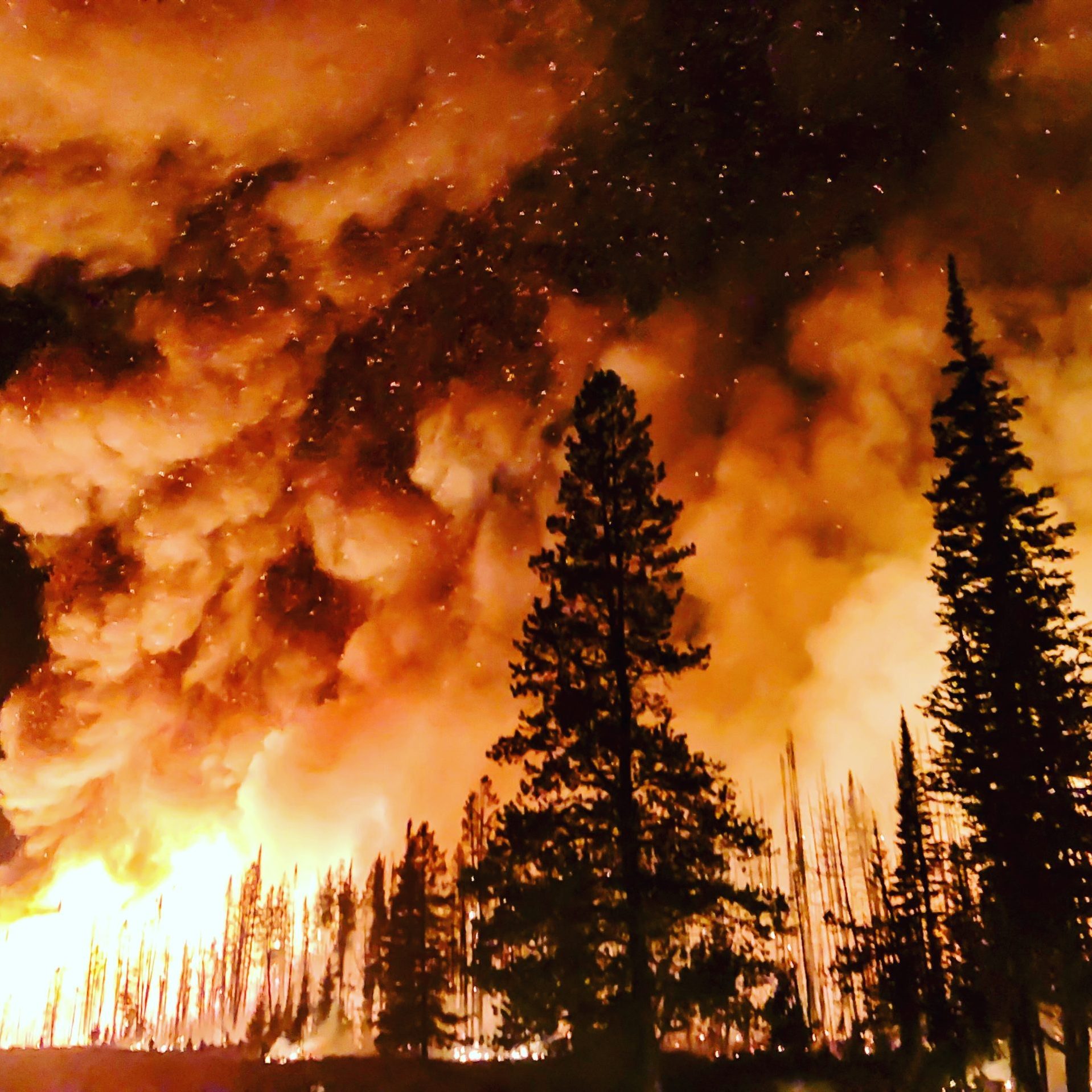
Objectives
1) Improve understanding of how social interactions affect collaborative decision-making in CWPPs.
2) Identify conditions that shape implementation of risk mitigation activities proposed in CWPPs, especially activities that span administrative boundaries or extend over large spatial scales.
3) Evaluate factors that affect the efficiency of risk mitigation at regional scales, and particularly the reduction of disparities in resources, capacities, and hazardous conditions among communities.
4) Engage and inform local, state, and national decision-makers to co-produce policy-relevant insights from the research.
Project Topics
Community Wildfire Protection Plans
Our research aims to improve the understanding of wildfire risk mitigation planning and implementation by studying stakeholders and their relationships in Community Wildfire Protection Plans (CWPPs) in Colorado. Focusing on CWPPs along with related wildfire collaborative planning processes will allow us to study how these processes are formed, play out over time, and ultimately contribute to risk mitigation.
We have completed document analysis of Colorado CWPPs and completed about 150 interviews during the Spring and Summer of 2022.
Associated Results & Materials:
- Courtney et al. 2024. Application of Participatory Process Mapping (Academic Journal Article, Methods Note)
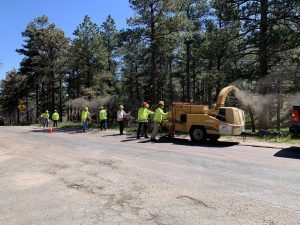
Local Capacity to Mitigate Wildfire
This research aims to better understand local capacity to mitigate vulnerability to wildfire in Colorado, USA.
Part 1 seeks to explore spatial patterns of local capacity relative to wildfire risk across the state of Colorado, USA, with the aim of informing efforts to reduce vulnerability to wildfire.
Part 2 seeks to understand processes that enable communities to translate elements of capacity into wildfire mitigation outcomes through qualitative interviews.
Led by M.S. student, Karissa Courtney at CSU
Associated Results & Materials:
- Courtney et al. 2024. Insights From Community Interviews (Briefing Paper)
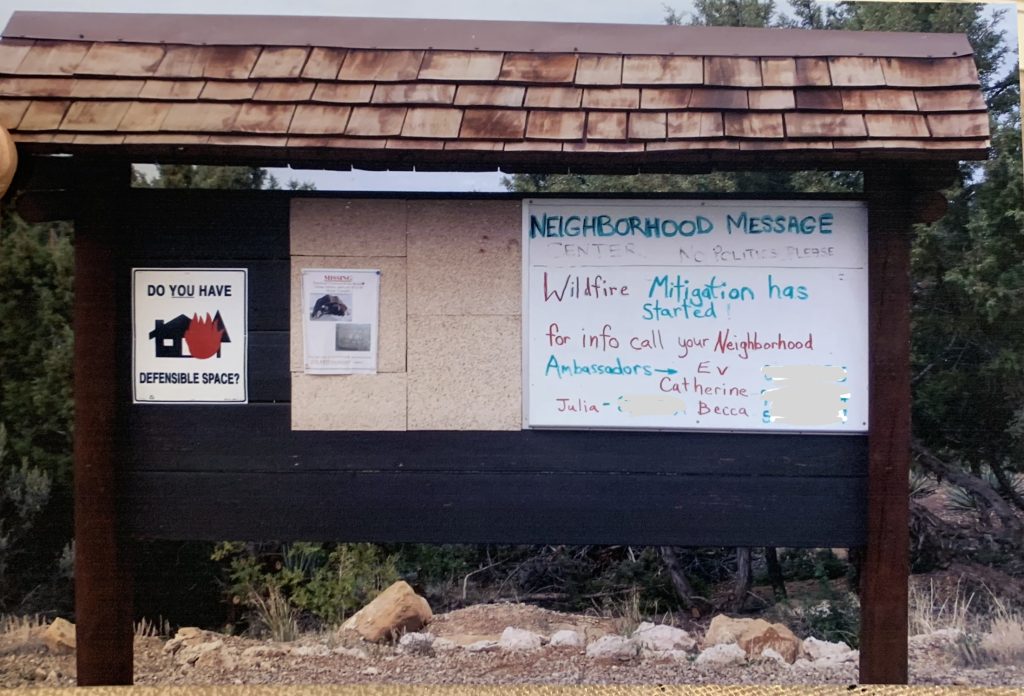
Community bulletin board for wildfire mitigation
Complex Systems & Risk Governance
We focus on the rules and norms in a population that can incentivize individuals to make decisions to prepare for wildfire and participate in collaborative governance, and how those institutions will persist or fail.
Associated Results & Materials:
- Coming soon!
Other Contributors
Student Research Assistants
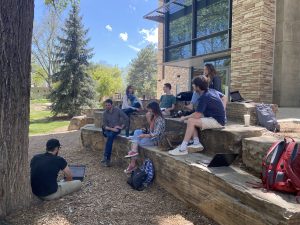
Karissa Courtney, CSU
Ryan Filtz, CSU
Harrison Fried, OSU
Jordan Inskeep, OSU
Aidan Lyde, CSU
Clara Mosso, CSU
Emily Palsa, OSU
Emily Rabung, OSU
Hallie Stelzle, OSU
